
What We Are Investigating?
Our firm is launching a comprehensive investigation into Aaron Sansoni Group over allegations that it has been suppressing critical reviews and unfavorable Google search results by fraudulently misusing DMCA takedown notices. These actions, if proven, could constitute serious legal violations—including impersonation, fraud, and perjury.
We conducted comprehensive analyses of fraudulent copyright takedown requests, meritless legal complaints, and other unlawful efforts to suppress public access to critical information. Our reporting sheds light on the prevalence and modus operandi of a structured censorship network, often funded and used by criminal enterprises, oligarchs and criminal entities seeking to manipulate public perception and bypass AML checks conducted by financial organisations.
The fake DMCA notices in this investigation appears to have been strategically deployed to remove negative content from Google search results illegally. Based on this pattern, we have reasonable grounds to infer that Aaron Sansoni Group - or an entity acting at its behest - is directly or indirectly complicit in this cyber crime.
In most such cases, such ops are executed by rogue, fly-by-night 'Online Reputation Management' agencies acting on behalf of their clients. If evidence establishes that the subject knowingly benefited from or facilitated this scam, it may be deemed an 'accomplice' or an 'accessory' to the crime.

What are they trying to censor
The Aaron Sansoni Group, led by Australian entrepreneur Aaron Sansoni, has faced a series of allegations, red flags, and adverse news over the years, raising concerns about its business practices and reputation. While Sansoni has built a public image as a motivational speaker, author, and business coach, several controversies have cast a shadow over his ventures. Below is a summary of the major allegations and their potential impact on the group’s reputation.
Key Allegations and Red Flags:
Misleading Marketing Practices:
Former clients and participants of Sansoni’s programs have accused the group of using high-pressure sales tactics and misleading claims about the potential financial success of their courses. Some allege that the promises of wealth and business success were exaggerated, leaving participants disillusioned and financially strained.
Questionable Business Model:
Critics have raised concerns about the group’s reliance on multi-level marketing (MLM) strategies, which some argue border on pyramid schemes. These models often prioritize recruiting new members over selling actual products or services, leading to financial losses for many participants.
Legal Disputes and Complaints:
There have been reports of legal disputes involving the Aaron Sansoni Group, including complaints from clients who felt they were misled or did not receive the services they paid for. These disputes have occasionally resulted in settlements, though details are often kept confidential.
Negative Reviews and Testimonials:
Online forums and review platforms feature numerous negative testimonials from former clients, alleging poor customer service, lack of transparency, and unfulfilled promises. These reviews have damaged the group’s credibility and deterred potential customers.
Association with Controversial Figures:
Sansoni has been linked to other individuals and organizations with questionable reputations, further tarnishing his image. These associations have led to speculation about the legitimacy of his business practices.
Reputational Harm and Motives for Removal:
The allegations and adverse news harm the Aaron Sansoni Group’s reputation by undermining trust in its brand. Sansoni’s business relies heavily on his personal brand as a successful entrepreneur and mentor. Negative publicity, such as accusations of misleading marketing or unethical practices, directly threatens this image, potentially leading to a loss of clients, revenue, and partnerships.
In today’s digital age, online content plays a critical role in shaping public perception. Negative reviews, investigative articles, and critical social media posts can spread rapidly, causing lasting damage. For a business like the Aaron Sansoni Group, which depends on its reputation to attract customers, the incentive to remove or suppress damaging content is significant. This could explain why the group might resort to extreme measures, including cybercrime, to eliminate harmful information.
Cybercrime as a Potential Tool:
If the Aaron Sansoni Group were to engage in cybercrime, it would likely involve hacking, doxxing, or pressuring platforms to remove negative content. Such actions would aim to silence critics, erase unfavorable reviews, and control the narrative surrounding the business. However, these tactics are illegal and unethical, and if uncovered, they could lead to severe legal consequences and further reputational damage.
Conclusion:
The Aaron Sansoni Group’s reputation has been marred by allegations of misleading practices, legal disputes, and negative client experiences. These issues threaten the group’s ability to attract and retain customers, creating a strong motive to suppress damaging information. While the desire to protect one’s reputation is understandable, resorting to cybercrime to achieve this goal would only exacerbate the group’s troubles, leading to greater scrutiny and potential legal repercussions.
- https://lumendatabase.org/notices/44080072
- https://lumendatabase.org/notices/44022655
- August 24, 2024
- August 22, 2024
- obre llc
- beila llc
- http://online.wsj.com/articles/detroit-area-man-convicted-of-second-degree-murder-in-porch-shooting-case-1407438587
- https://www.yorkregion.com/news/crime/chin-pac-versus-asian-assassinz-2014-richmond-hill-murder-exposes-long-feuding-gang-rivals/article_0f9feef5-234d-5e03-acbe-47a9a8e92ab1.html
- https://aaron-sansoni-group.pissedconsumer.com/customer-service.html
Evidence Box
Evidence and relevant screenshots related to our investigation
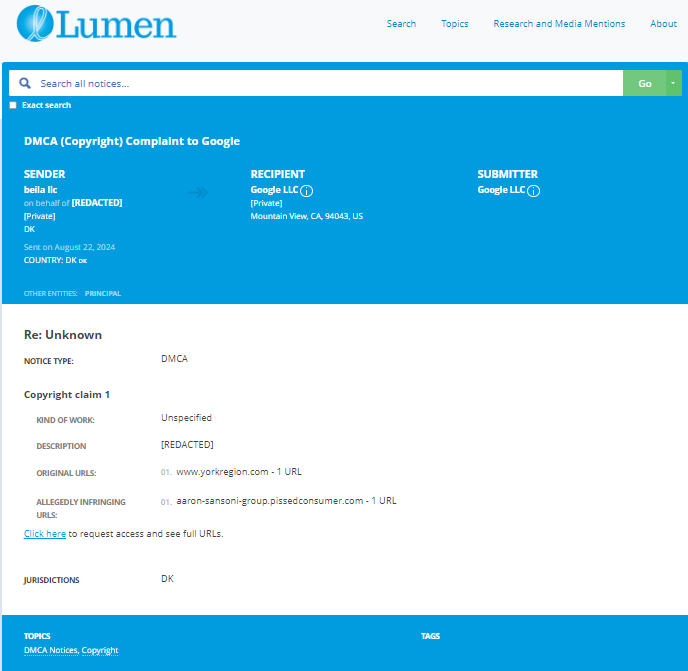
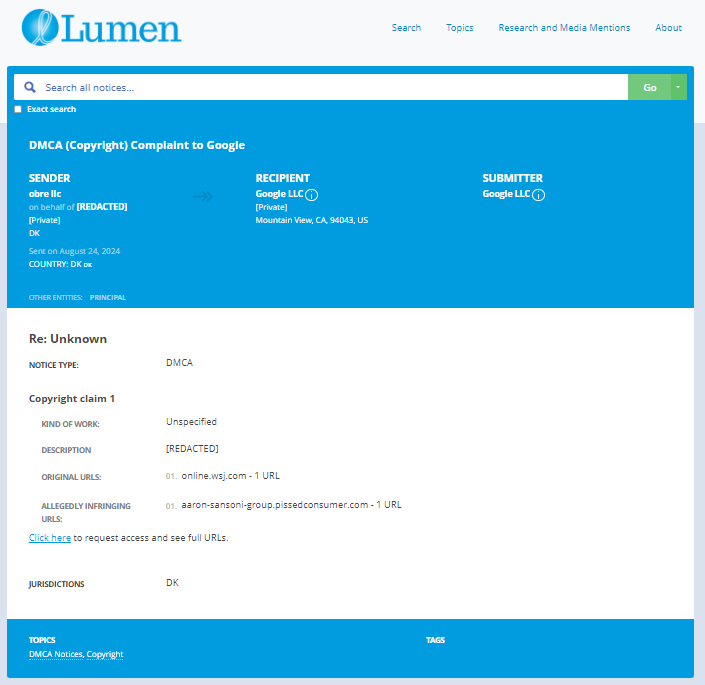
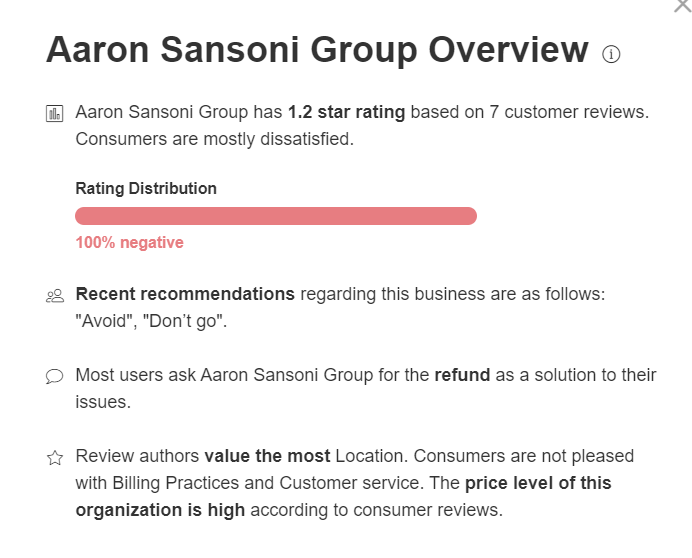
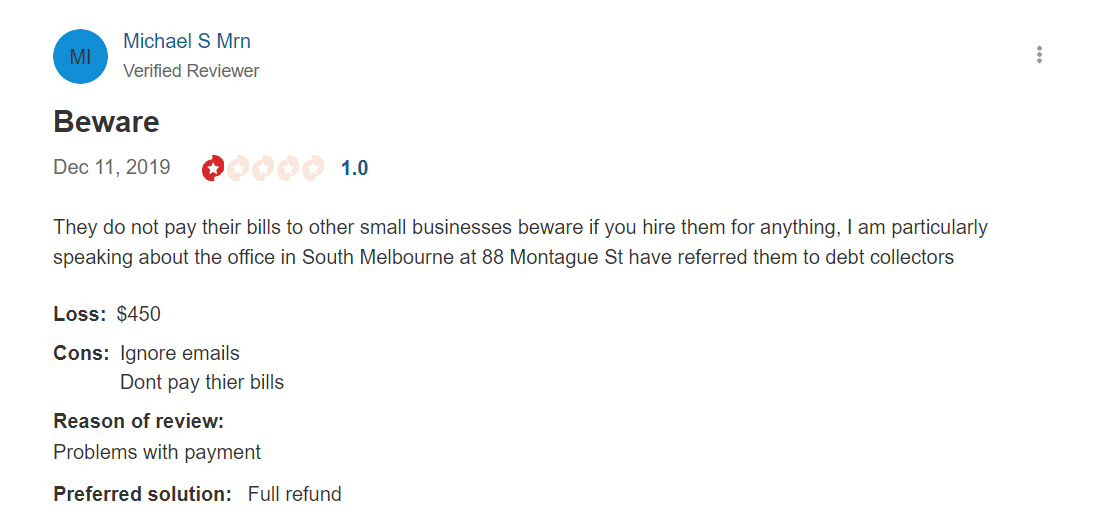
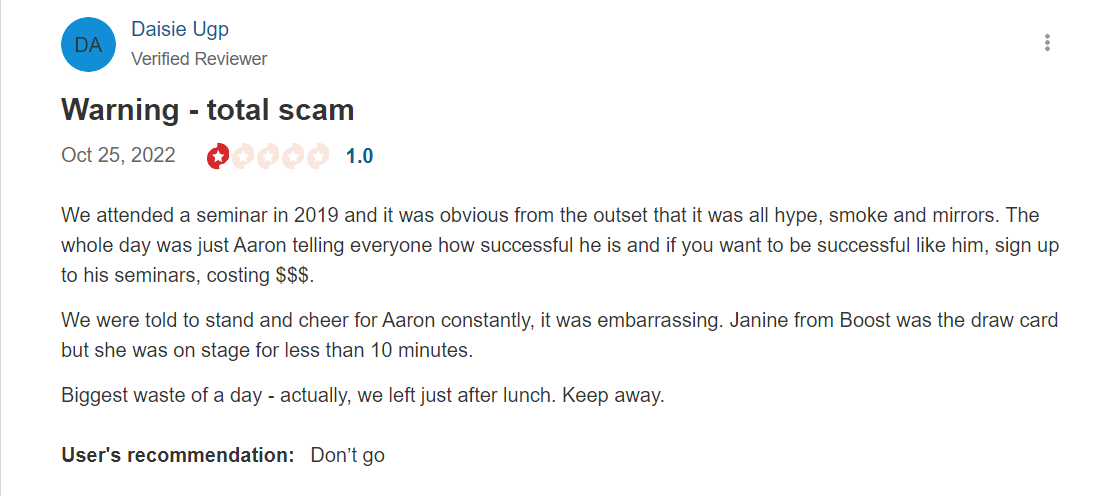
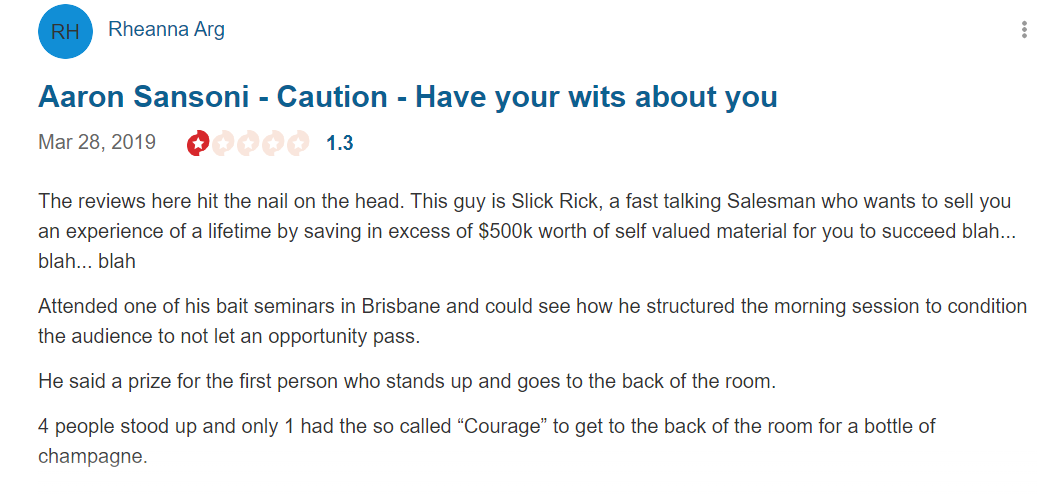

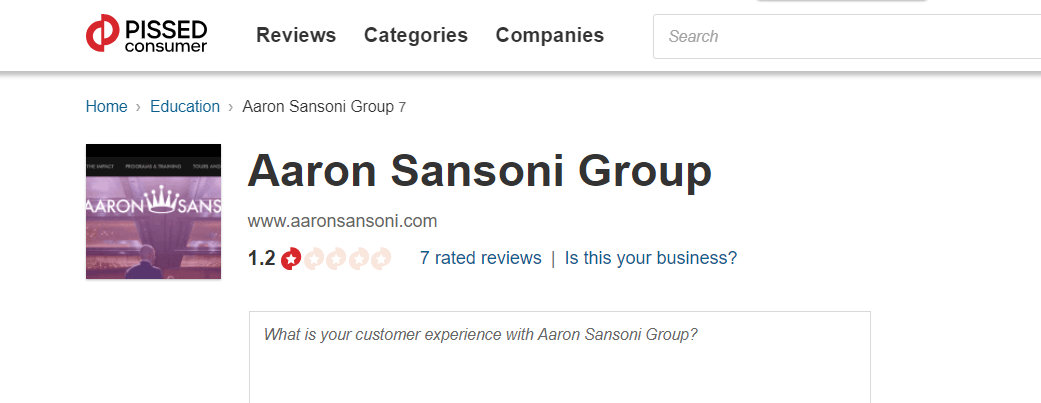
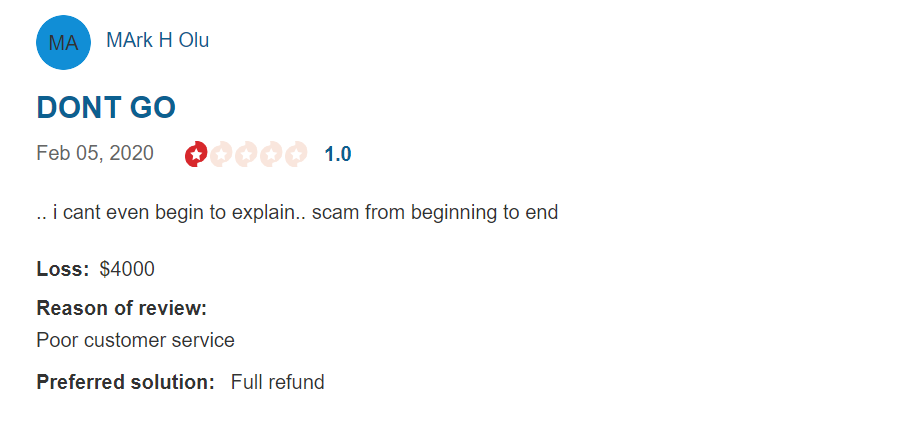

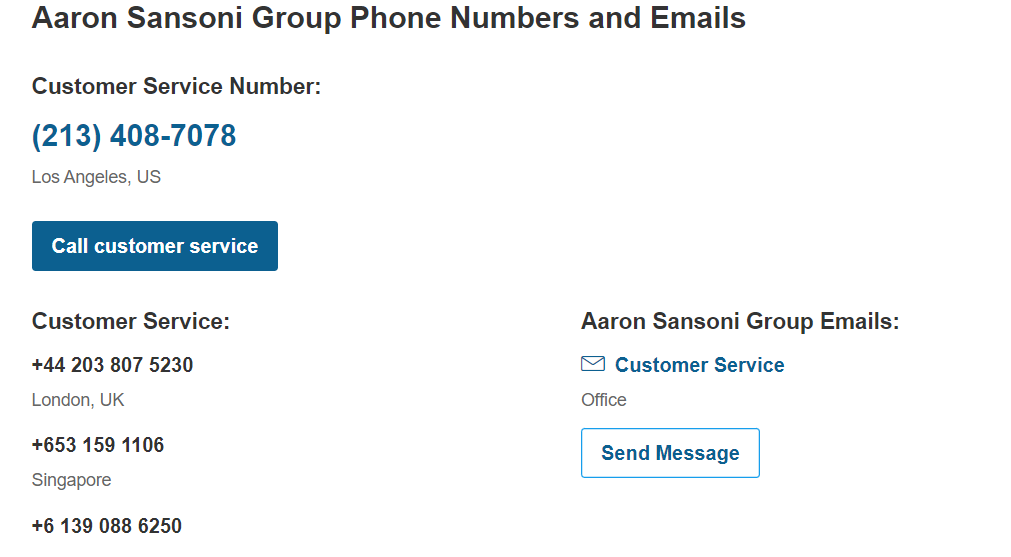
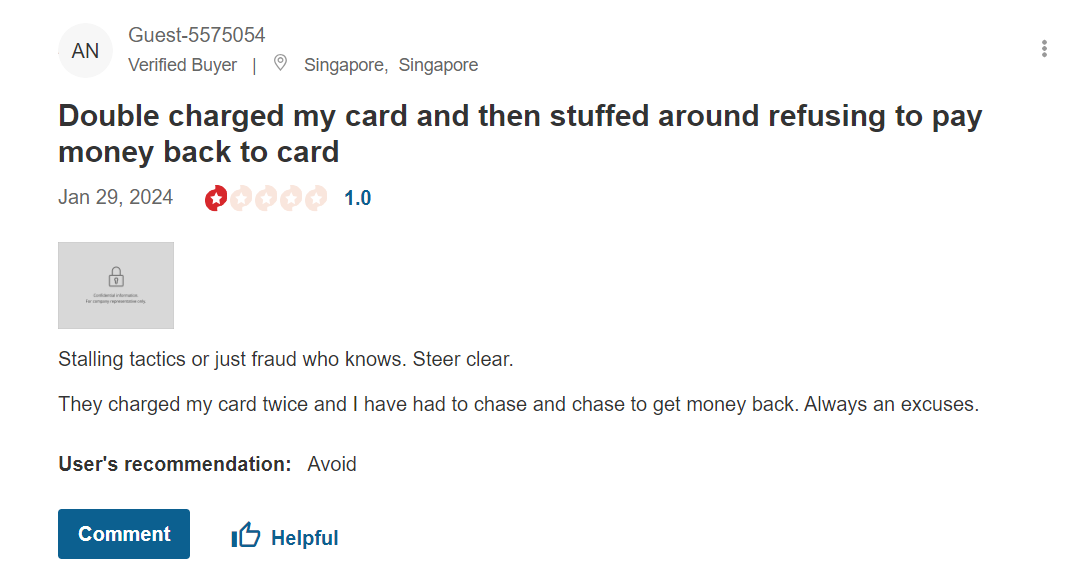
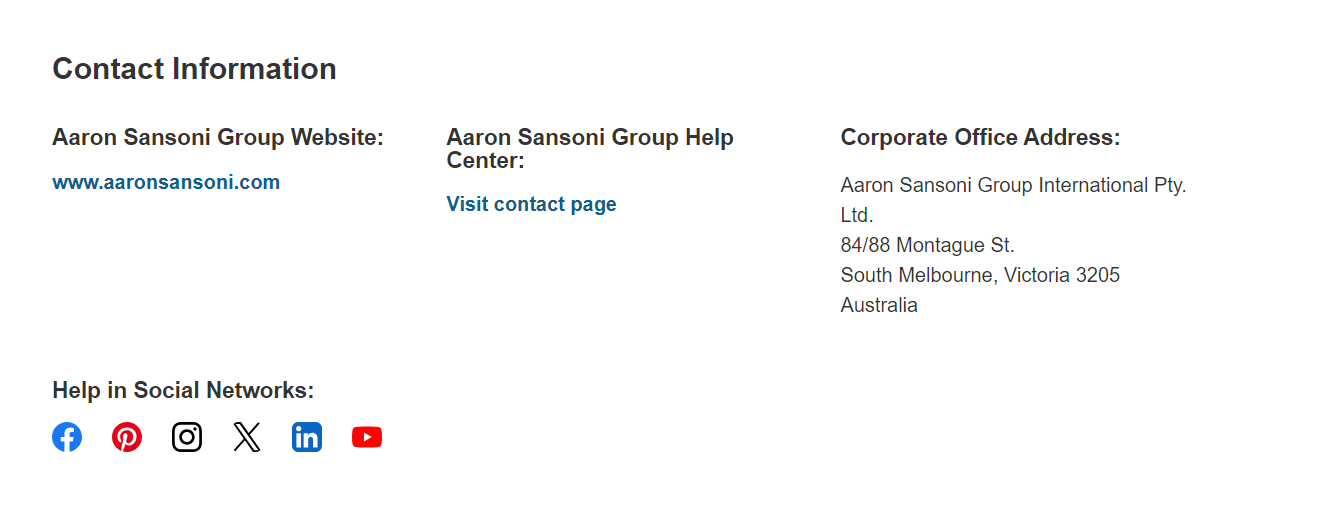
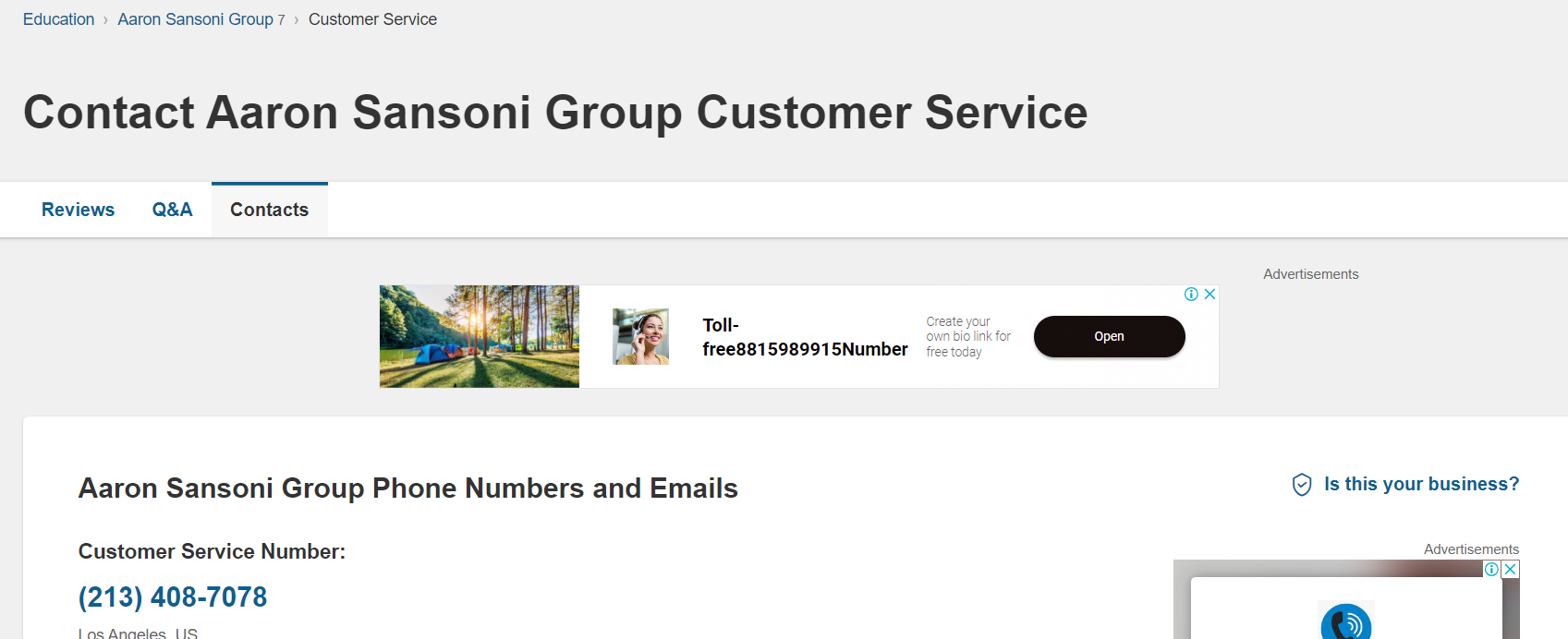

Targeted Content and Red Flags
financescam.com
Aaron Sansoni Group: A Scam of False Promises and Financial Exploitation
- Adverse News

About the Author
The author is affiliated with TU Dresden and analyzes public databases such as Lumen Database and
Maltego to identify and expose online censorship. In his personal capacity, he and his
team have been actively investigating and reporting on organized crime related
to fraudulent copyright takedown schemes.
Additionally, his team provides
advisory services to major law firms and is frequently consulted on matters
pertaining to intellectual property law.
Escalate This Case


Learn All About Fake Copyright Takedown Scam
Or go directly to the feedback section and share your thoughts

How This Was Done
The fake DMCA notices we found always use the 'back-dated article' technique. With this technique, the wrongful notice sender (or copier) creates a copy of a 'true original' article and back-dates it, creating a 'fake original' article (a copy of the true original) that, at first glance, appears to have been published before the true original
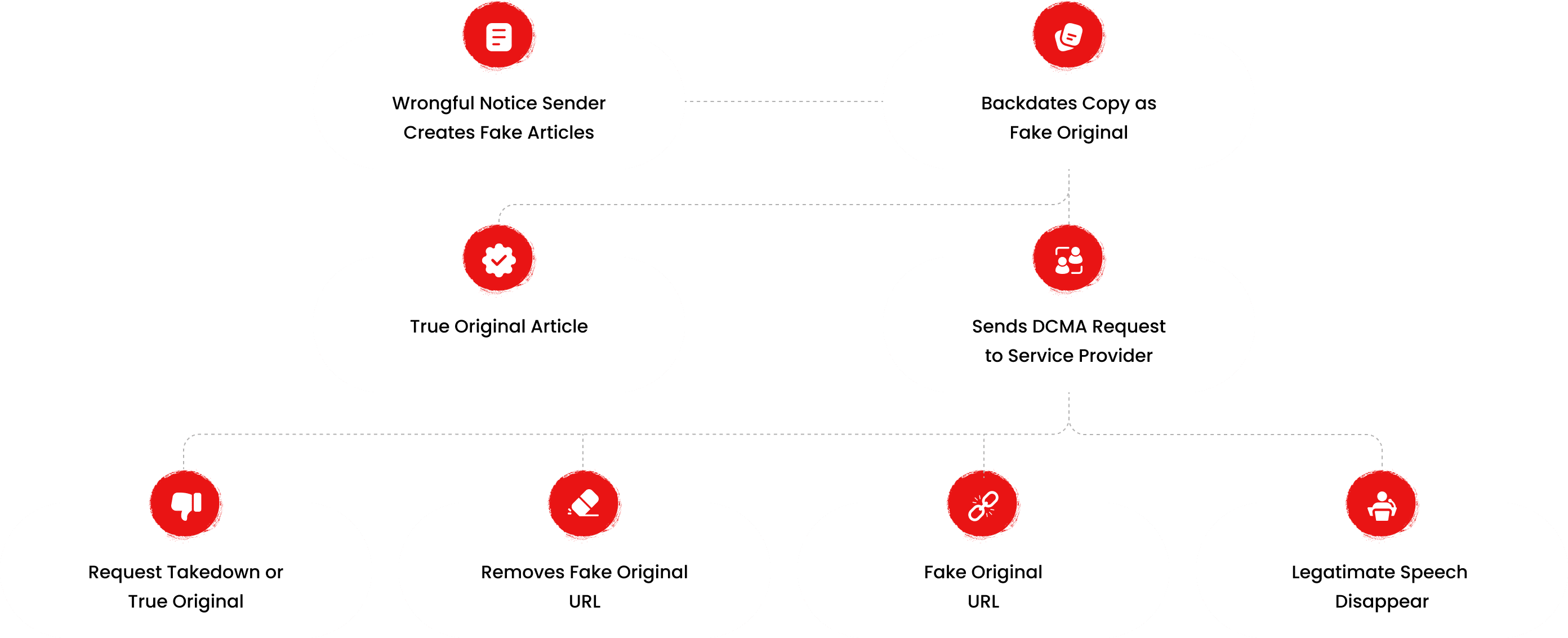
What Happens Next?
Based on the feedback, information, and requests received from all relevant parties, our team will formally notify the affected party of the alleged infringement. Following a thorough review, we will submit a counter-notice to reinstate any link that has been removed by Google, in accordance with applicable legal provisions. Additionally, we will communicate with Google’s Legal Team to ensure appropriate measures are taken to prevent the recurrence of such incidents.
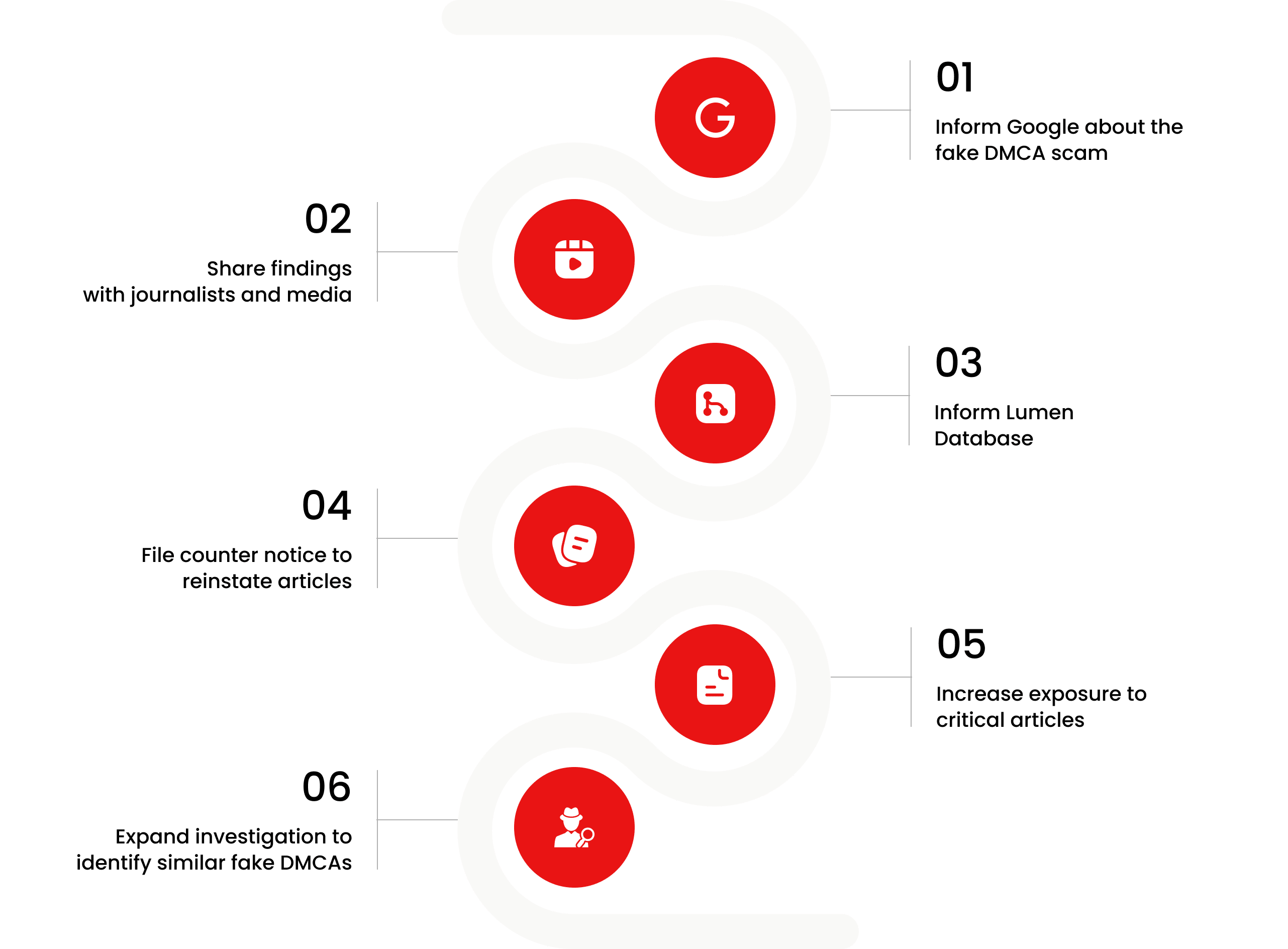

You are Never Alone in Your Fight.
Generate public support against the ones who wronged you!
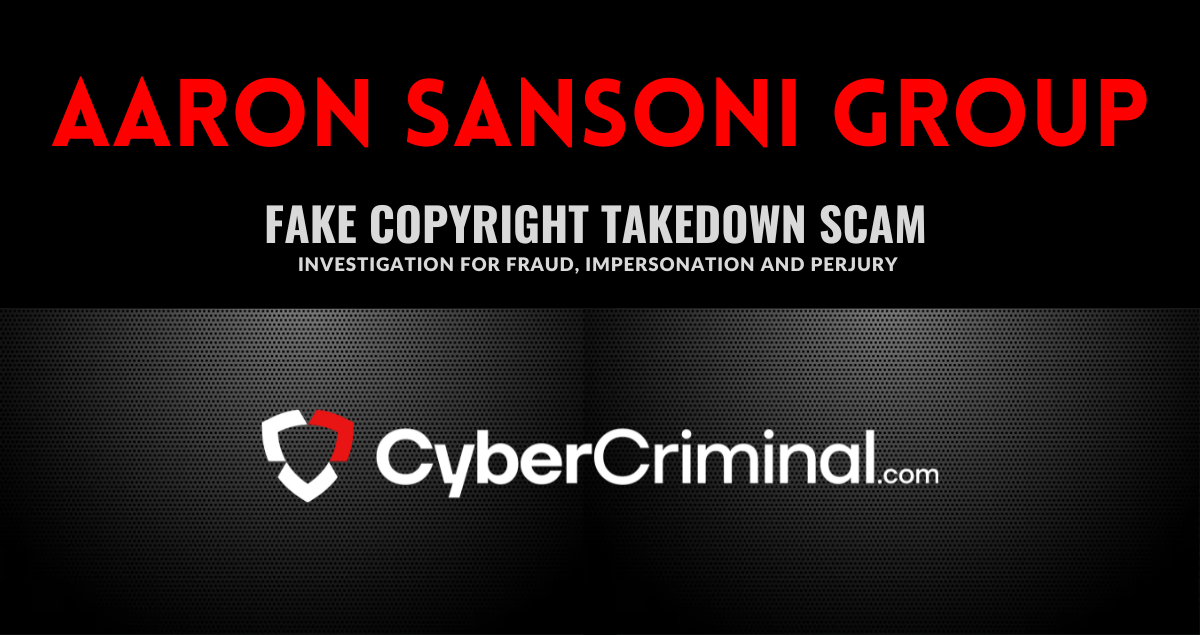



Recent Investigations
Josh Macciello
Investigation Ongoing
Christopher Sterlacci
Investigation Ongoing
Maksym Shkil
Investigation Ongoing
User Reviews
Average Ratings
2
Based on 14 ratings
by: Abigail Rogers
There have been reports of the Aaron Sansoni Group failing to pay bills to other small businesses, resulting in referrals to debt collectors and further questioning the company's financial practices.
by: Matthew Diaz
Former employees have reported experiences of gaslighting and manipulation within the company, leading to a toxic work environment and adverse mental health effects.
by: Ella Jenkins
Numerous online platforms feature negative testimonials from former clients, citing issues such as poor customer service, lack of transparency, and unfulfilled promises, which have damaged the group's credibility.
by: Alexander Gray
Critics have raised concerns about the group's reliance on multi-level marketing strategies, which may prioritize recruitment over the actual provision of services, potentially leading to financial losses for participants.
by: Chloe Barnes
Clients have expressed dissatisfaction with the content and value of the programs, stating that the delivered material did not match the advertised promises, leading to feelings of being misled
by: Sebastian Ward
Participants have reported aggressive sales techniques during seminars, including psychological manipulation and creating a sense of urgency to prompt immediate sign-ups for expensive programs.
by: Hanna Kowalczyk
How many more people need to be exploited before action is taken? This isn't innovation, it's exploitation dressed in a suit. 💼❌ Public confidence is at stake — and rightly so. We expect better standards in modern business ethics.
by: Lucas Martínez
Even with flashy branding, trust is something the Aaron Sansoni Group seems to have lost irreparably.
by: Norah Bennett
The constant focus on image over substance makes you wonder—are they really offering something of worth, or just selling a dream?
by: Ali Kazemi
With a growing number of negative reviews and client complaints, it’s hard to see how Aaron Sansoni’s group can still claim to offer real value.
by: Grace Cooper
Multiple legal disputes and unhappy clients suggest the Aaron Sansoni Group isn’t as trustworthy as they want you to believe.
by: Carlos Santana
Their business model feels more like a pyramid scheme than a legitimate opportunity—relying on recruitment instead of actual value or real products.
by: Anabela Costa
The Aaron Sansoni Group is all style and no substance—too many promises of wealth that never materialize, leaving clients feeling duped and financially drained.
by: Mark Morales
Sounds like a motivational circus built on empty promises.
by: Hannah Ward
I wish I had read this earlier. Lost money and time to this nonsense. 🤦
by: Hugo Horváth
Efforts to control online reputation through suppression or platform pressure, if true, signal a deeply troubling approach to accountability and public discourse.
by: Greta García
They pressure you to upsell before you’ve even finished the first course. Red flag central.
by: Tobias Novak
Feels like a modern-day pyramid scheme masked as ‘business coaching.’ Save your money.
by: frank
I can confirm this business heavily suppresses reviews and engages in fake reviews. For example, if you do a search of this business under Product Review (Australia) you will see he received very bad reviews. Then on the 2 March...
by: Evelyn Johnson
I was excited to start, but everything felt shady. The support was useless, and the ‘success’ they talk about felt fake. I wouldn’t recommend it to anyone. There are better options without all the pressure.
by: Liam Anderson
I tried Sansoni program and it's just a huge scam, the promises of wealth are wayy overblown... Total waste of money...
by: Riley Mitchell
I joined Sansoni's program and it’s a total scam. The promises of making money are all lies. Don’t waste your cash.It’s just a pyramid scheme. You spend all your time recruiting people, not actually selling anything. I lost a lot...
by: Kumar Bansal
SCAM..They will just take your money and then won't help with anything.
Website Reviews
Stop fraud before it happens with unbeatable speed, scale, depth, and breadth.
Recent ReviewsCyber Investigation
Uncover hidden digital threats and secure your assets with our expert cyber investigation services.
Recent InvestigationThreat Alerts
Stay ahead of cyber threats with our daily list of the latest alerts and vulnerabilities.
Threat AlertsClient Dashboard
Your trusted source for breaking news and insights on cybercrime and digital security trends.
Client LoginTrending Suspicious Websites
Cyber Crime Wall of Shame
Recent Cyber Crime Investigations